Wild Yeast Baking
Yeast and bacteria are everywhere; on your skin, on your countertop, in the air... which is how they end up in your bread. And by YOUR bread, I mean bread that you make and bake in your own kitchen, with sourdough start from your own air. It is a cool thought; the same basic two ingredients, flour and water, can be sourced anywhere in the world, yet even the exact same flour and exact same water will yield a different sourdough start based on the bacteria and yeast in the environment in which it grows.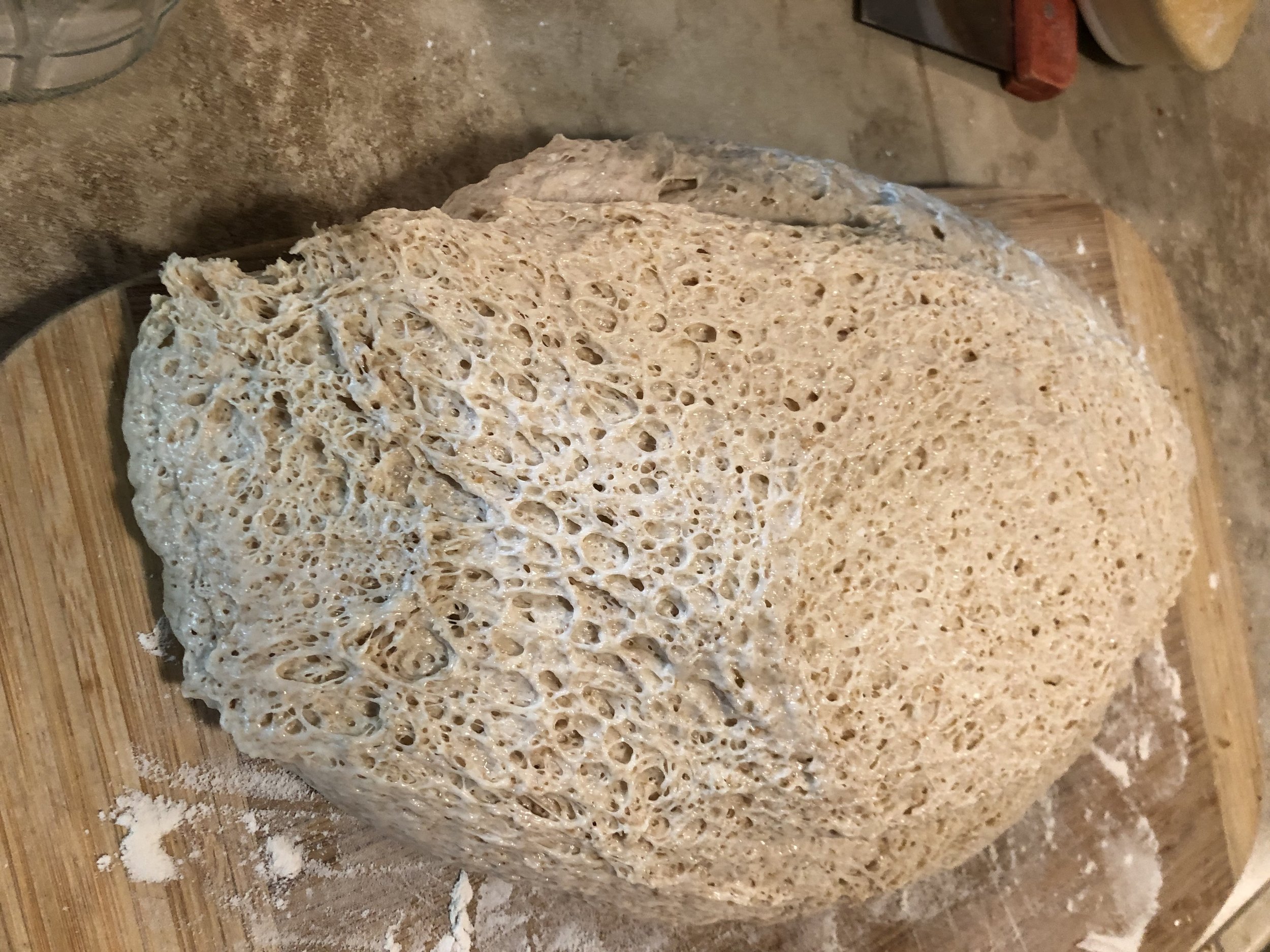
So What's Up with Sourdough?
THE SCIENCE
Wild yeast and bacteria from the air get into the flour and water mixture, called a sourdough start, and ferment the starch and sugars found there. A process called leavening then ensues as the gas byproduct of fermentation causes the dough to rise as bubbles form from within. This is what gives sourdough bread its "crump", or soft holes on the inside. Gluten is a protein in flour that forms a sticky and elastic bond with water to form dough. It is what stretches to hold the gas and form the bubbles. Therefore the higher the protein content of the flour, and or the more water in the dough (referred to as dough hydration), the more gluten there is available and the more potential for a larger rise. The more hydrated the dough the softer it will be as well. 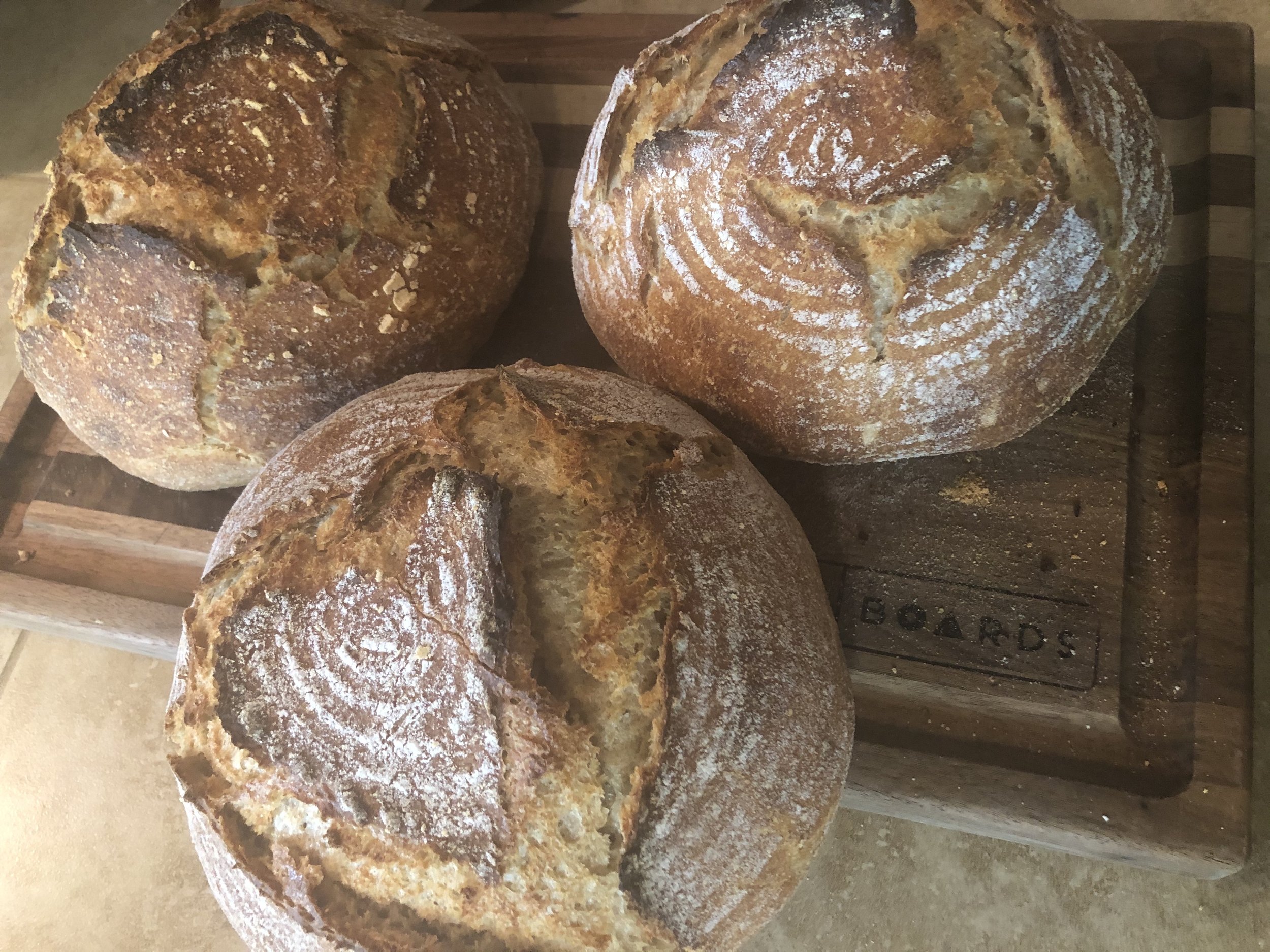 Use of wild yeast to leaven dough was the only way to make bread until yeast was made commercially some 100 plus years ago. This was the start of the industrialization of bread making.
Use of wild yeast to leaven dough was the only way to make bread until yeast was made commercially some 100 plus years ago. This was the start of the industrialization of bread making.
THE ART
Today, use of wild yeast has turned science into an art, as it is not just a means to feed yourself, but a culinary journey! Once you understand the science you can "play" with the process. 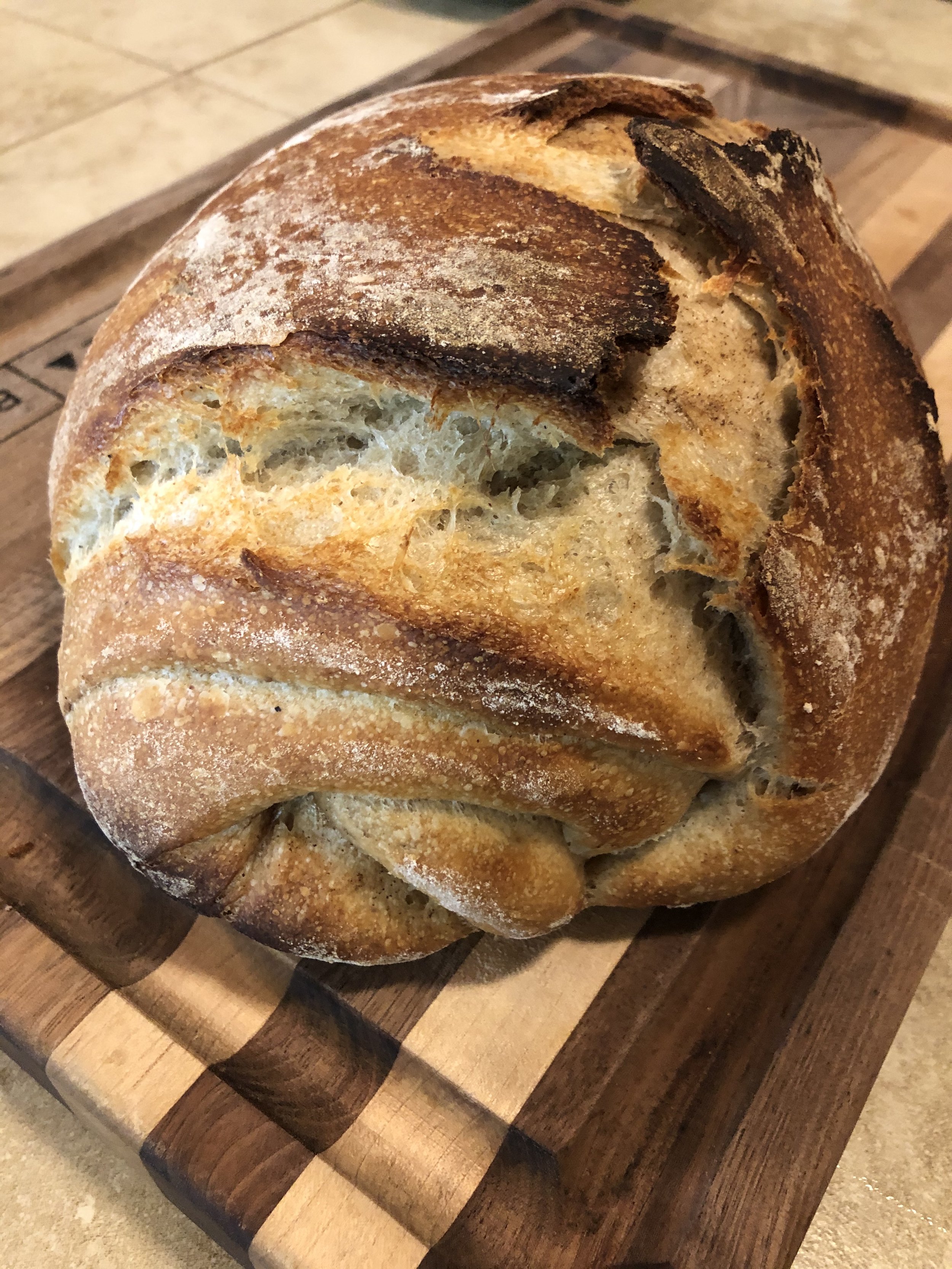
More water, less water, how much start to use, how long to proof, what kind of flour to use, what to bake in, how long to bake... there are so many aspects to tweak and change to form various crump, textures, tastes and crust.
There are so many variables, in fact, that I don't pretend to ever be able to make the same loaf twice. A least not in my novice state. The same recipe on a hot day means my bread needs less proofing (rising time) and if I don't pay attention it may collapse, or I might opt for an overnight refrigerator proof if I am running out of daylight. And on and on the options go. 
From reading*, I have learned the following:
- If you knead your dough the gluten will form faster, so you can proof shorter.
- If you do the stretch and fold technique with the dough instead of kneading it is less labor, but must sit longer to proof (this is my preferred method).
- A warmer room temperature means a sweeter bread (due to difference in microbe activity with various temperatures).
- A colder room, or proofing in the refrigerator, means a more sour bread.
- A rye flour based sourdough starter will yield a more sour and fruity flavor (different bacteria prefer different flour types).
- A wheat flour based starter will yield a more malty or nutty flavor.
- Baking with a cover or lid over the bread retains moisture, which delays the crust from forming, or firming, so the bread can continue to leaven within.
- Once moisture is evaporated from the bread's surface the sugars will brown, forming the crust.
*see resources at end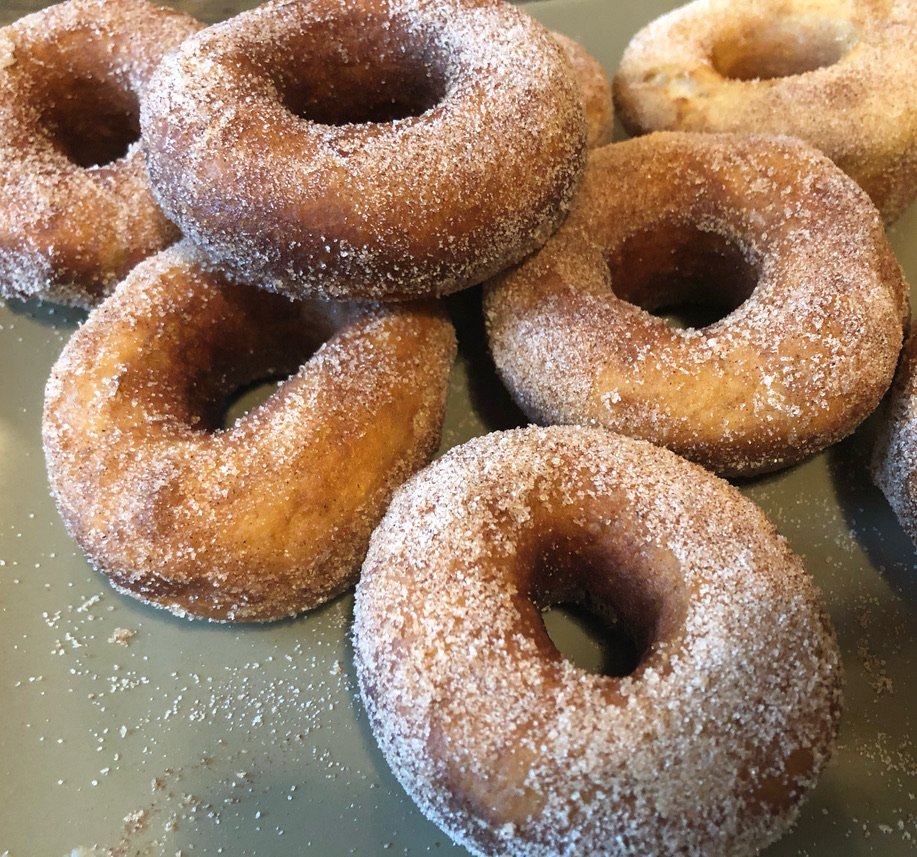
Sourdough Nutrition
The yeast and bacteria put off a variety of byproducts during fermentation. Not only do these help form the bread crump, but they hold health benefits as well. Lactic acid indirectly allows for increased absorption of minerals found in the flour.Acetic acid acts as an antimicrobial agent, or a natural preserver, increasing the shelf life of the bread. I find this fascinating, as microbes (bacteria) made the bread, yet they make an acid that prevents other bacteria from taking over to spoil their creation.
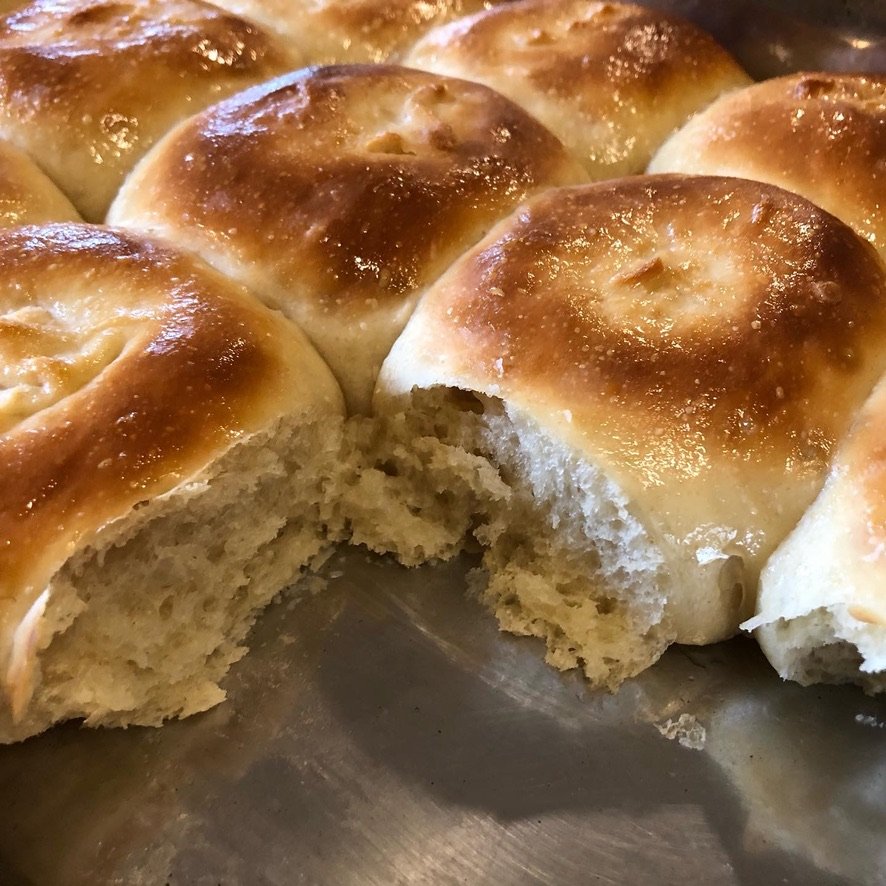 Sourdough bread is easier to digest, especially for those who are gluten intolerant. The longer the dough sits and ferments the more gluten is broken down by bacteria prior to consumption. Fermentation also means less starch, as it is eaten away by the yeast and bacteria, which means less, and slower, release of glucose (sugar) into the blood.
Sourdough bread is easier to digest, especially for those who are gluten intolerant. The longer the dough sits and ferments the more gluten is broken down by bacteria prior to consumption. Fermentation also means less starch, as it is eaten away by the yeast and bacteria, which means less, and slower, release of glucose (sugar) into the blood.
My Sourdough Bakes
I have fond memories of my grandma making sourdough cornbread and biscuits. She had her sourdough start since she was 21 years old and she lived to be over 90! That is even longer than you raise your children... impressive.
In her honor, I (finally) made my own sourdough start. It is now about four months old; baby steps.
[gallery ids="1833,1834" type="rectangular"]The first few loaves I made were either too dense (not enough liquid) or too flat (not enough proofing or not enough surface area when shaping). It took several tries and a combination of several recipes I found online before I was semi-satisfied with my basic, plain loaf.I have learned now that I can take my basic dough recipe and technique and apply it to many bakes! I can do rolls and pretzels and bagels, I can add cinnamon and nuts and cheese and veggies, without changing much.[gallery ids="1831,1832" type="rectangular"]Here is what I do. And yes, in spite of my dislike of following recipe details, I DO use a kitchen scale for measuring. So much easier and less clean-up!
Whisk together in a small bowl:
-
100g starter, fed the night before
-
360g water, room temperature
Measure in large bowl:
-
200g whole wheat flour
-
300g all purpose unbleached flour
-
1 tsp salt (I do like my grandma taught and measure this in the palm of my hand)
Pour wet ingredients into dry and mix until fully combined. I like to use a wooden spoon first then use my hand to lightly knead until a sticky ball of dough is formed. Cover with towel and let sit for 30-60min (depending on what else you have going and when you remember!). Stretch and fold from outside to middle, four to five times around the outside of the dough, keeping it round in shape. Transfer dough to a greased bowl, cover and let sit another 30-60min. Repeat the stretch and fold 4-5 more times. I would add any extras (raisins, nuts, etc.) after first fold.
Now you are ready to shape it how you want. You can proof the dough in the fridge overnight, or on counter for a few hours, depending on your timing and what you are making.[gallery ids="1824,1825" type="rectangular"]I wont pretend to be good at designing recipes, so take my personal sharing as motivation only. I encourage you to seek outside advice as necessary![gallery ids="1828,1829" type="rectangular"]
Sourdough Zucchini Cheese Bread
My latest sourdough creation was to use a large lump of grated, squeezed zucchini, and an equally large lump of grated cheddar cheese, to make my favorite sourdough bread to date.I used this recipe from Zesty South Indian Kitchen, however by accident I added FOUR TIMES the amount of zucchini the recipe called for, as I measured it AFTER squeezing out the water as oppose to before as the recipe indicated (and of which I failed to read).I was skeptical that the dough would be too wet, or too many pockets between the dough due to the large mass of zucchini, but alas it turned out excellent. I over backed it by almost ten minutes, however a longer bake turned out to be the right thing to do under the circumstances. SO GOOD![gallery ids="1822,1823" type="rectangular"]
The distinct tastes, textures, and health benefits of wild yeast baking- not to mention satisfaction of crafting your own artisan bread in house!- make the long process of sourdough worth the trial and error to perfection.
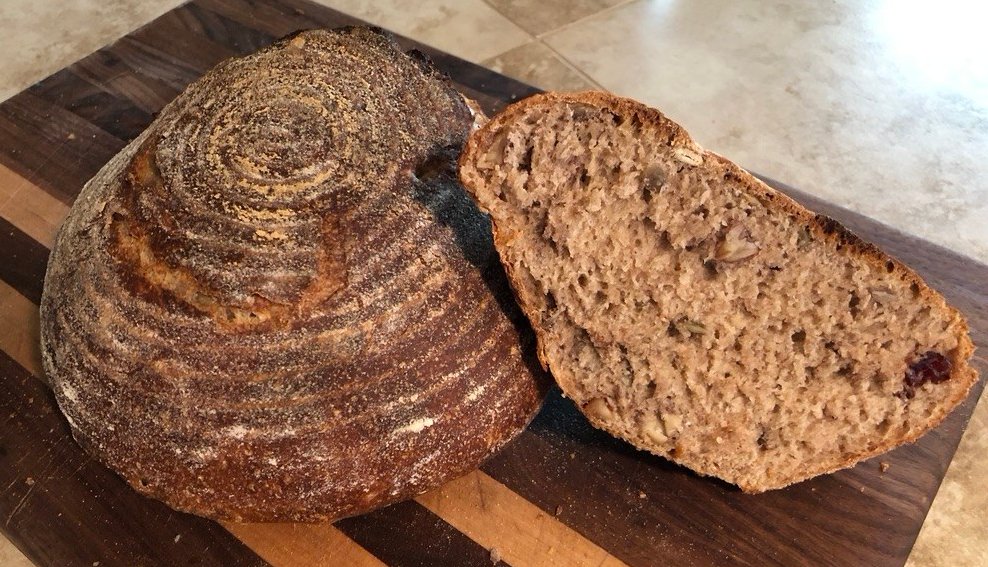 Resources:Ideas.Ted.Com, Inside the fascinating (and delicious) science of sourdough bread. https://ideas.ted.com/inside-the-fascinating-and-delicious-science-of-sourdough-bread/The Guardian, The Science of Making Sourdough Bread. https://www.theguardian.com/science/2020/may/23/the-science-of-making-sourdough-breadNPR OPB, Discovering the Science Secrets of Sourdough. https://www.npr.org/sections/thesalt/2016/10/28/499363379/discovering-the-science-secrets-of-sourdough-you-can-help
Resources:Ideas.Ted.Com, Inside the fascinating (and delicious) science of sourdough bread. https://ideas.ted.com/inside-the-fascinating-and-delicious-science-of-sourdough-bread/The Guardian, The Science of Making Sourdough Bread. https://www.theguardian.com/science/2020/may/23/the-science-of-making-sourdough-breadNPR OPB, Discovering the Science Secrets of Sourdough. https://www.npr.org/sections/thesalt/2016/10/28/499363379/discovering-the-science-secrets-of-sourdough-you-can-help

